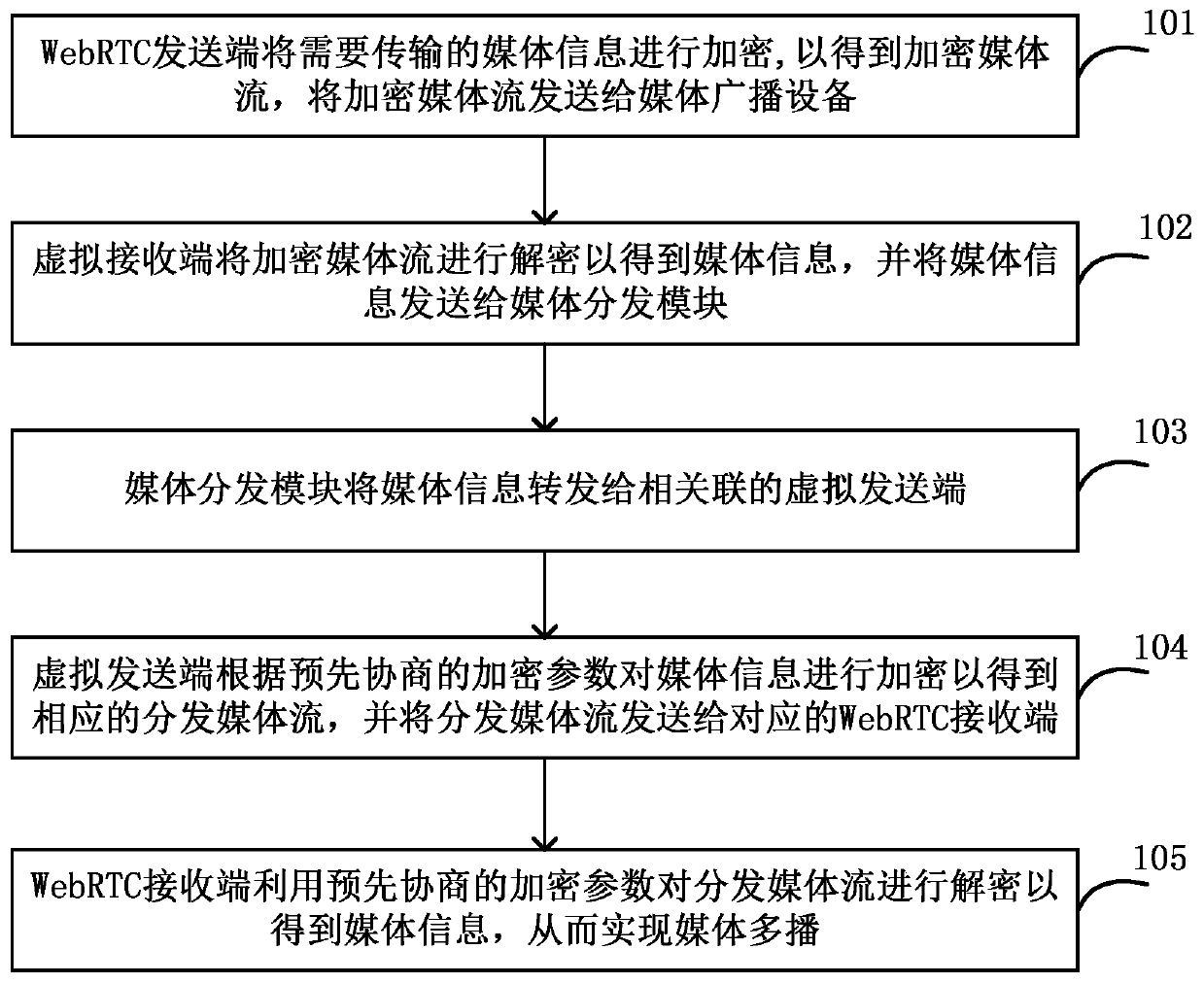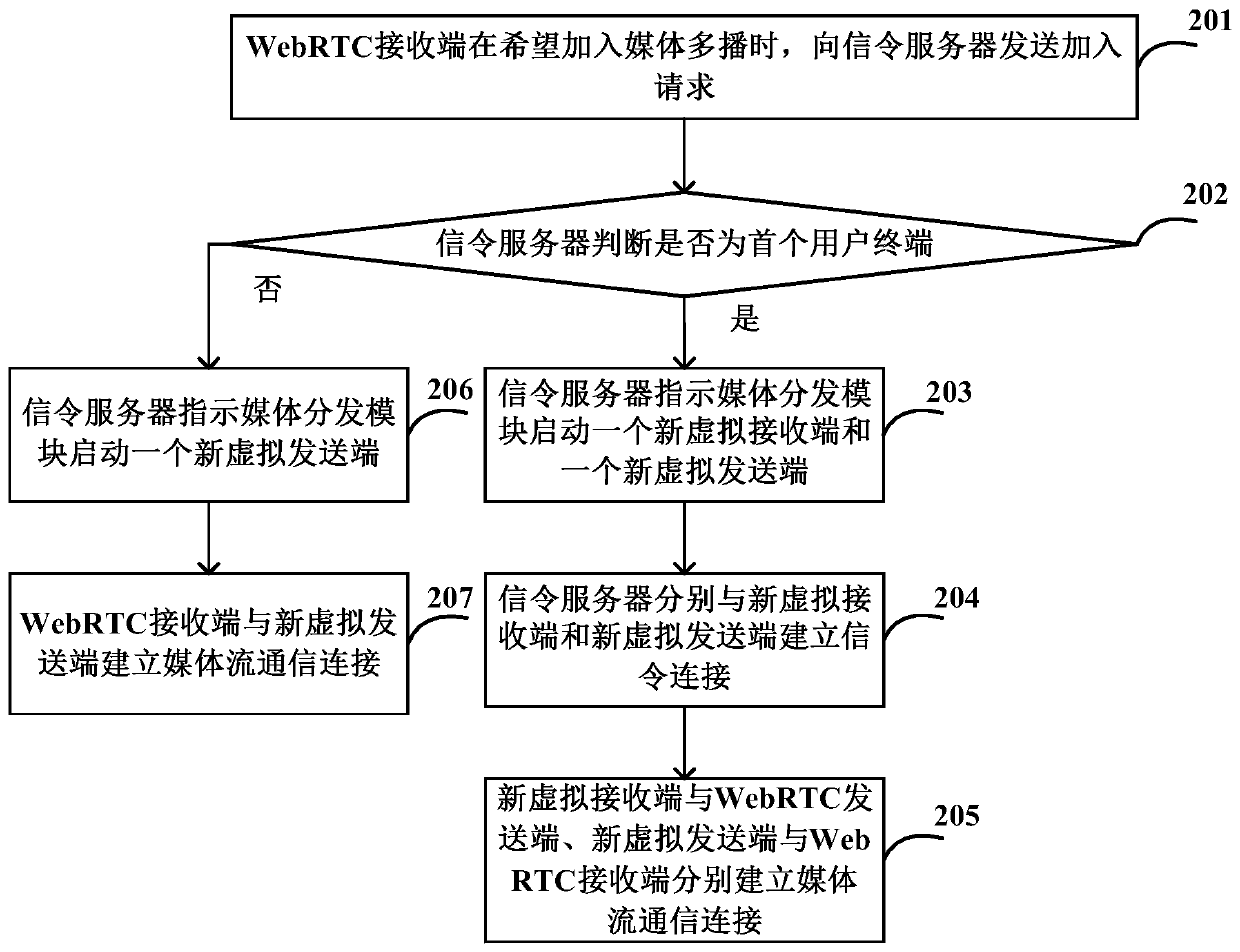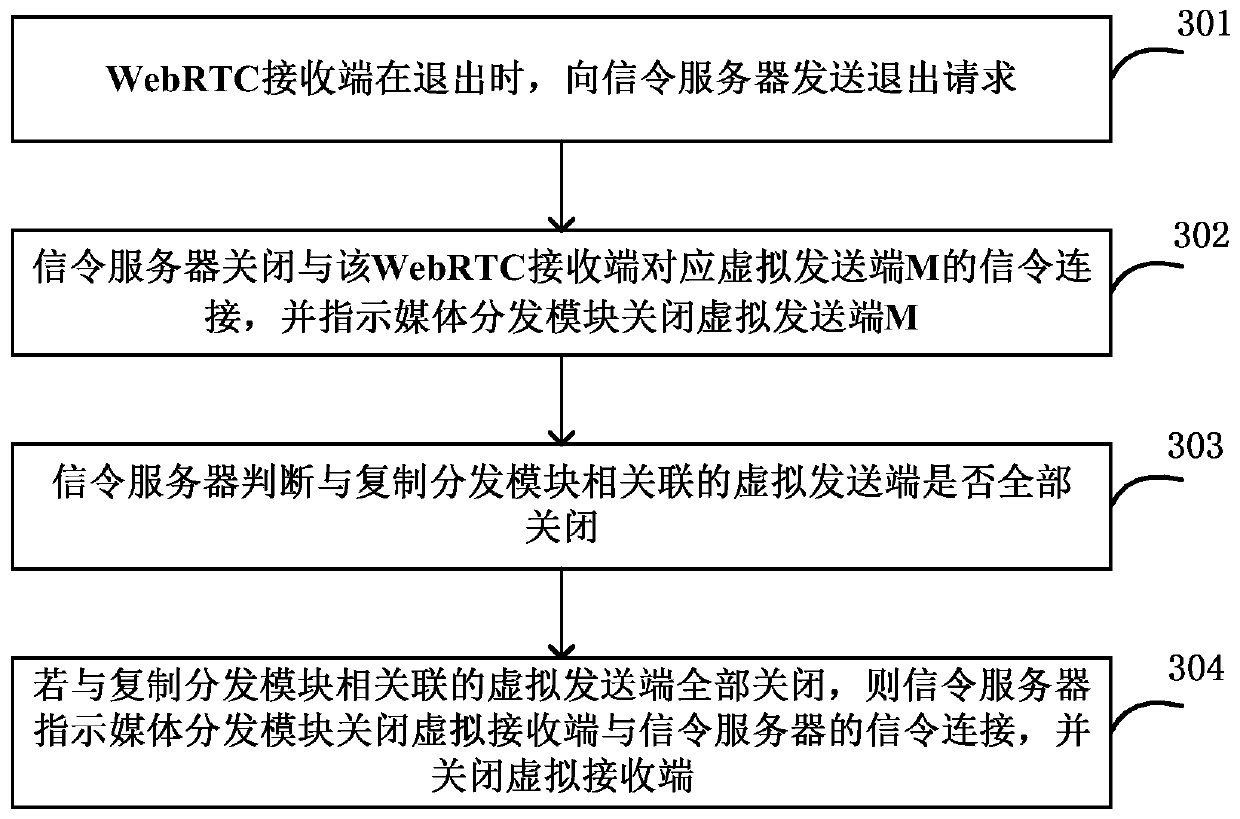Media multicast method and system based on web real-time communication
A real-time communication and media technology, applied in the field of communication, which can solve the problems of small number of multicast channels, high computational complexity and high power consumption.
- Summary
- Abstract
- Description
- Claims
- Application Information
AI Technical Summary
Problems solved by technology
Method used
Image
Examples
Embodiment 1
[0121] Embodiment 1: The first user terminal joins the media multicast
[0122] Such as Figure 6 As shown, when the WebRTC receiver 1 wants to join the media multicast, it sends a joining request to the signaling server. After receiving the join request, the signaling server determines that the WebRTC receiver 1 is the first user terminal, and then instructs the media distribution module to start a virtual receiver and a virtual sender 1, wherein the virtual sender 1 is associated with the media distribution module. The signaling server establishes signaling connections with the virtual receiving end and the virtual sending end 1 respectively.
[0123] The virtual receiving end and the WebRTC sending end, and the virtual sending end 1 and the WebRTC receiving end 1 respectively perform media parameter negotiation to establish a media stream communication connection. Therefore, the media distribution module can forward the received media information to the associated virtual...
Embodiment 2
[0124] Embodiment 2: The non-first user terminal joins the media multicast
[0125] Such as Figure 7 As shown, when the WebRTC receiver 2 wants to join the media multicast, it sends a joining request to the signaling server. After receiving the joining request, the signaling server determines that the WebRTC receiver 2 is not the first user terminal, and then instructs the media distribution module to start a new virtual sender 2, wherein the new virtual sender 2 is associated with the media distribution module.
[0126] The WebRTC receiver 2 negotiates media parameters with the new virtual sender 1 to establish a media stream communication connection. Therefore, the media distribution module can forward the received media information to the associated virtual sender 1 and virtual sender 2 . The virtual sender 1 and the virtual sender 2 respectively encrypt the media information according to the pre-negotiated encryption parameters to obtain the corresponding distribution m...
Embodiment 3
[0127] Embodiment 3: User terminal withdraws from media multicast (there are other user terminals in the system)
[0128] Such as Figure 8 As shown, when the WebRTC receiver 2 wants to quit the media multicast, it sends a joining request to the signaling server. The signaling server closes the signaling connection with the virtual sender 2 corresponding to the WebRTC receiver 2, and instructs the media distribution module to close the virtual sender 2. Since the WebRTC receiver 1 still participates in the media multicast at this time, the system maintains the normal operation of other components.
PUM
 Login to View More
Login to View More Abstract
Description
Claims
Application Information
 Login to View More
Login to View More - R&D
- Intellectual Property
- Life Sciences
- Materials
- Tech Scout
- Unparalleled Data Quality
- Higher Quality Content
- 60% Fewer Hallucinations
Browse by: Latest US Patents, China's latest patents, Technical Efficacy Thesaurus, Application Domain, Technology Topic, Popular Technical Reports.
© 2025 PatSnap. All rights reserved.Legal|Privacy policy|Modern Slavery Act Transparency Statement|Sitemap|About US| Contact US: help@patsnap.com



